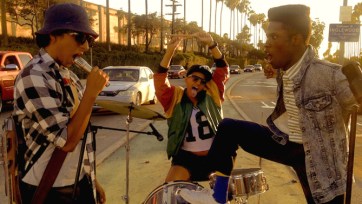
In more than 100 photographs, including a striking set that has been lost for more than 120 years, “Black Chronicles II” reveals a mash-up of racist imagery and cultural tropes that in many ways will be familiar to American viewers — and still often reveals the timeless humanity of the subjects.
Current issues of cultural identity and self-determination are at the fore of the exhibit, says gallery executive director Vera Grant, although the works themselves were largely made from 1862 to 1899. Curated by Renée Mussai and Mark Sealy of the London-based arts agency Autograph ABP, “Black Chronicles II” was produced through original research in private collections in the United Kingdom in collaboration with the Hulton Archive, London, a division of Getty Images. Part of a larger ongoing project called “The Missing Chapter,” it is the second in a series of exhibitions dedicated to excavating archives that began in 2011 with a small showcase done in collaboration with Magnum Photos in London.

Despite the anonymity of many of its subjects (research is ongoing), “Black Chronicles II” reveals the complicated nature of life for people of color in Victorian England. Ndugu M’Hali, for example, came to the public’s attention as Kalulu, the boy servant of the explorer Sir Henry Morton Stanley. In this show, he is depicted several times, in both African and Western dress, a child between cultures.
A more formal series of small portraits — largely cartes de visites, or calling cards — opens the exhibit. These include images of Sarah Forbes Bonetta, a native of West Africa who was “given” to Queen Victoria as a slave and raised as her goddaughter. In two portraits from 1862, one with her husband, she appears the essence of a calm, well-dressed Victorian lady, despite her tragic history.













 Lonnie G. Bunch III, the director of the African American history museum, said in a statement that the ship “represents one of the earliest attempts to bring East Africans into the trans-Atlantic slave trade”.
Lonnie G. Bunch III, the director of the African American history museum, said in a statement that the ship “represents one of the earliest attempts to bring East Africans into the trans-Atlantic slave trade”.











